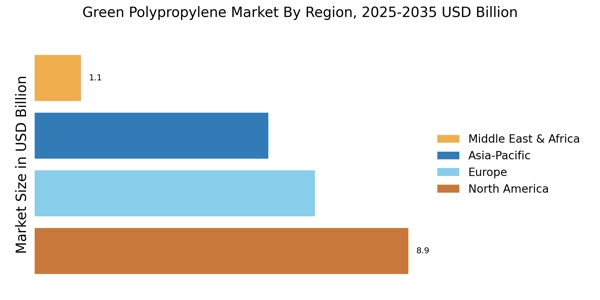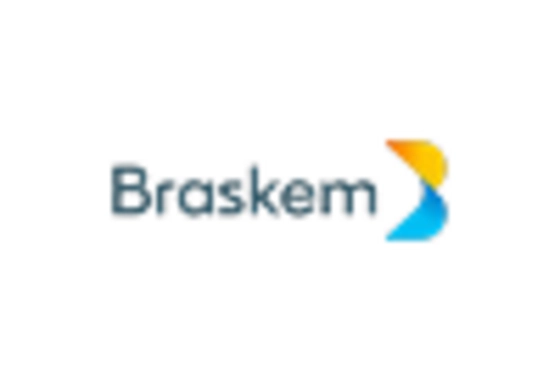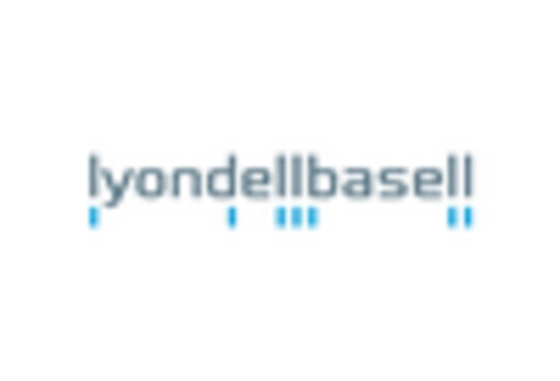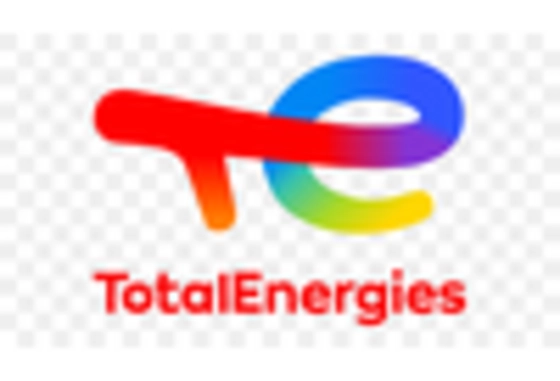Supportive Regulatory Frameworks
The establishment of supportive regulatory frameworks is increasingly influencing the Green Polypropylene Market. Governments worldwide are implementing policies aimed at promoting the use of sustainable materials, which could enhance the market's growth prospects. For example, regulations mandating the use of recycled content in products are likely to encourage manufacturers to adopt green polypropylene as a compliant alternative. Additionally, incentives for companies that invest in sustainable practices may further stimulate demand. As these regulations evolve, they may create a more favorable environment for the Green Polypropylene Market, potentially leading to increased investments and innovations in sustainable materials.
Innovations in Production Technologies
Technological advancements in the production of green polypropylene are likely to play a pivotal role in shaping the Green Polypropylene Market. Innovations such as the development of bio-based feedstocks and improved polymerization processes are enhancing the efficiency and sustainability of production. For instance, recent breakthroughs in catalyst technology have enabled the production of polypropylene from renewable resources, which could potentially reduce reliance on fossil fuels. This shift not only aligns with sustainability goals but also appears to lower production costs over time. As these technologies mature, they may lead to increased adoption of green polypropylene across various sectors, including packaging, automotive, and textiles, thereby expanding the market's reach.
Rising Demand for Sustainable Materials
The increasing consumer awareness regarding environmental issues appears to drive the demand for sustainable materials, including those in the Green Polypropylene Market. As industries strive to reduce their carbon footprints, the shift towards eco-friendly alternatives is becoming more pronounced. Recent data indicates that the market for sustainable materials is projected to grow at a compound annual growth rate of approximately 10% over the next five years. This trend suggests that manufacturers are likely to invest in green polypropylene as a viable substitute for traditional polypropylene, thereby enhancing its market presence. Furthermore, the growing preference for recyclable and biodegradable products among consumers is expected to bolster the Green Polypropylene Market, as companies seek to align their offerings with consumer values.
Growing Applications in Various Industries
The versatility of green polypropylene is becoming increasingly apparent, as it finds applications across a multitude of industries. The Green Polypropylene Market is witnessing a surge in demand from sectors such as automotive, packaging, and consumer goods. For instance, the automotive industry is increasingly utilizing green polypropylene for interior components due to its lightweight and durable properties, which contribute to fuel efficiency. Additionally, the packaging sector is adopting green polypropylene for its recyclability and reduced environmental impact. This broadening application base suggests that the market may continue to expand, driven by the need for sustainable solutions in diverse industries.
Consumer Preference for Eco-Friendly Products
Consumer preferences are shifting towards eco-friendly products, which is likely to have a profound impact on the Green Polypropylene Market. As awareness of environmental issues grows, consumers are increasingly seeking products that align with their values. This trend is evident in various sectors, including fashion, where brands are adopting sustainable materials to appeal to environmentally conscious consumers. Market Research Future indicates that a significant percentage of consumers are willing to pay a premium for products made from sustainable materials, including green polypropylene. This willingness to invest in eco-friendly options may encourage manufacturers to prioritize the development and marketing of green polypropylene, thereby driving growth in the market.


















Leave a Comment